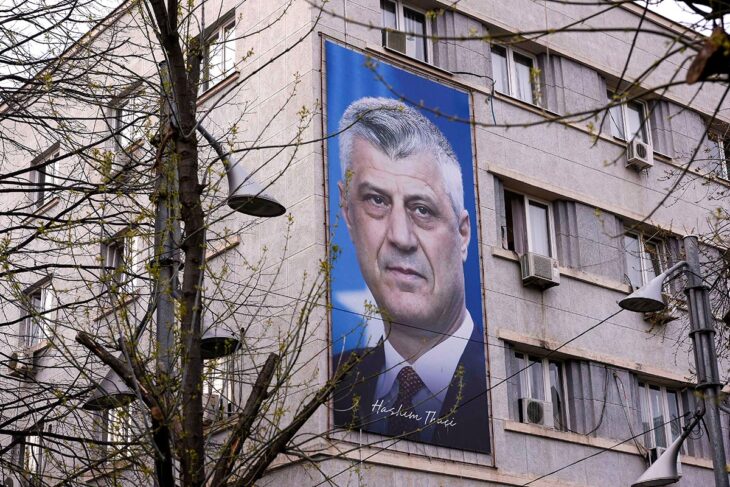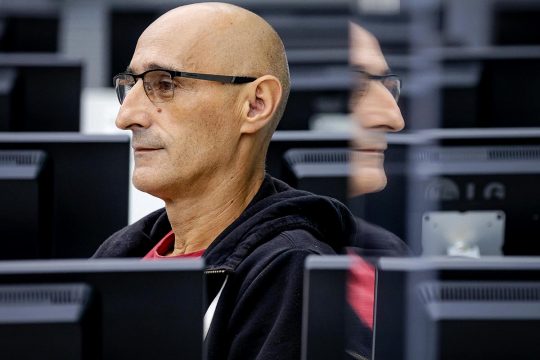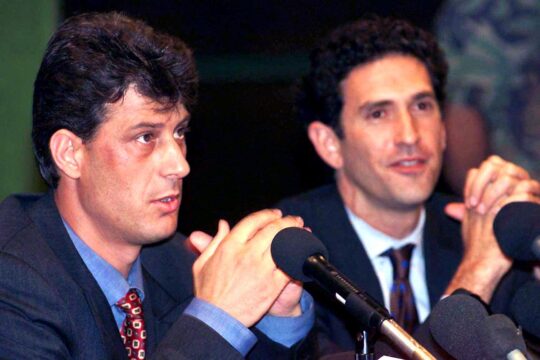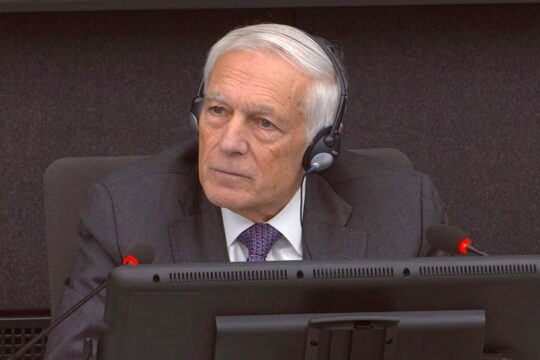It will be their ‘grand trial’. Behind the ivy-clad red brick edifice of the Kosovo Specialist Chambers (KSC), that seats in The Hague, staff are preparing for the big event of this tribunal’s history, with the trial of former Kosovo President Hashim Thaçi and three of his former Kosovo Liberation Army (KLA) guerrilla comrades face on Monday 3 April on ten charges of war crimes and crimes against humanity. The KSC are part of Kosovo’s judicial system but are located in the Netherlands and fully staffed by internationals.
“These hybrid tribunals usually are after big, powerful people”, says Balkan journalist and lawyer Marija Ristić, noting that the case against Thaçi has stoked tensions in the country. “Whenever you have arrests or wherever you had indictments, it quite changes the political landscape, it changes the government formations, it changes how police forces are organised, how the army is organised. The fact is that the party that he was running is no longer as powerful as it was when he was a free man”, she says.
Up until now the Kosovo special court has dealt with allegations of witness interference and tried two former KLA commanders, while it has zealously protected the investigation into the heaviest crimes committed during the national liberation struggle. Now the prosecutors have the chance to show their workings and prove that those who were at the highest levels behind the creation of the Kosovan state must also answer for alleged crimes.
Four men and one hundred murders
The indictment against the four men alleges that as part of a “joint criminal enterprise”, the four men committed the crimes between at least March 1998 and September 1999, and bear criminal responsibility for nearly 100 murders.
Hashim Thaçi is charged alongside three former KLA leaders and prominent politicians, Kadri Veseli, a former Kosovo parliament speaker and leader of the Kosovo Democratic Party, Jakup Krasniqi, the former chairman of the national council of the Social Democratic Initiative, the NISMA party, and Rexhep Selimi, the former head of the parliamentary group of what was the biggest opposition party at the time, Vetëvendosje.
The four men face a long indictment detailing alleged beatings, murders and a mass grave, alongside some of the names of the ethnic Albanian, Serb and Roma victims in the case. As senior figures in the KLA guerrilla, they had “superior responsibility” say the prosecutors, which makes them complicit because either they were aware of violations but did not take action to prevent criminal acts or punish the perpetrators, or they directly participated in the crimes themselves or gave orders for them.
A “slow” and “unjust” justice
This “newest hybrid court in the Balkans” is actually “the only one dedicated solely to Kosovo and solely focussed on one specific group”, notes Ristić. That fact, compared to the International Criminal Tribunal for the former Yugoslavia (ICTY) which has indicted indiscriminately Serbs, Bosnians, Croats and Kosovars, and the fact that “only those who were members of the KLA can be prosecuted, for many people in Kosovo is seen as something very unjust,” she says.
But the ICTY only covered a handful of the crimes alleged to have occurred during the heat of the Kosovo war in 1998 and 1999. “Most of the crimes committed in Kosovo were actually committed by the Yugoslav forces and the Serbian army,” says Ristić. “And in general, the justice for crimes committed in Kosovo has been quite slow.”
Ristić wonders how the prosecutors will prove command responsibility: “What is the role that Thaçi and the other powerful KLA figures had actually in ordering the crimes?”, she says. “The Kosovo Liberation Army was a guerrilla group. So they didn't have a very clear structure. There were not so many documents, etc., like we have with other armies, like we had, for example, for the Yugoslav army. I will be very curious to see what the evidence is.”
Joint criminal enterprise?
Lachezar Yanev from the Vrije University in Amsterdam points out that at the centre of the alleged “joint criminal enterprise” has to be a common plan, and that “the prosecution is having a hard time defining what are the core crimes that the co-accused agreed on”. “The prosecution is saying there was basically a very vast joint criminal enterprise that was shared between Hashim Thaçi and several senior officials of the KLA and the rank-and-file officers on the ground. Is that even possible, that all these people - we're talking about hundreds of people – were coming together and sharing a common criminal plot to commit a crime?” he asks. “The prosecution sees this and says in the alternative, some of these members were actually not members of the joint criminal enterprise, but were used as ‘tools’ by the others to commit these crimes. That is much more realistic,” says Yanev. But to him, such unclarity may give the defence the opportunity to question whether a joint enterprise can be proved at all.
One of the more dramatic details in the indictment concerns a mass grave. On or around July 17, 1998, “a group of 11 Serb detainees were transferred to a room in the basement of a building in Malishevë/Mališevo [respectively spelled in Albanian and Serbian, the two official languages in Kosovo], where two other Serb detainees were already held”, and where they were beaten up. The prosecution claims that on July 19, “the detainees were placed in a van and driven to a nearby location where they were shot and killed by certain KLA members. One detainee escaped. The bodies of the other 12 men were recovered from a single mass grave.”
The indictment also details of alleged threats and pressure the four men used against the KLA’s political rivals, saying they sought to stamp their control over Kosovo “by means including unlawfully intimidating, mistreating, committing violence against, and removing those deemed to be opponents”. For instance, in June 1998, two “opponents” were allegedly “arrested, interrogated, and in one case severely beaten” by the accused and people under their control at the KLA’s Drenoc/Drenovac headquarters. They were then sent away to the KLA’s general headquarters by Thaçi and Veseli, “with Rexhep Selimi also present”. The two opponents “were never seen or heard from again”, reads the indictment.
Three months later, Hashim Thaçi himself, together with other KLA members, is alleged to have participated in and led the arrest, detention and intimidation of 13 members of a Kosovo parliamentary delegation who were on a humanitarian visit to Qirez/Ćirez. The delegation members were “badly beaten and had visible injuries”, write the prosecutors. Then, in Thaci’s presence, a KLA member threatened “to kill a member of the delegation”, and on their release Hashim Thaçi allegedly reinforced the threat by telling one delegation member that “even if you are free now, we could kill you in Pristina”.
The intimidation of witnesses has been a constant constraint on attempts to charge Kosovo war crimes in national and international courts. “One of the reasons why this court is in The Hague is actually because there were worries that witnesses will not be free to speak in Kosovo and that we will not have enough security for witnesses,” says Ristić. “This is a big burden on the Kosovo Specialist Chambers to actually fulfil this expectation, to keep all witnesses safe, and that witnesses actually don’t change testimonies or give up on testifying in this high-profile trial”, she adds.
The case is likely to be a long-running fixture in The Hague, with the prosecution intending to call more than 300 witnesses. Its presentation of evidence may continue into 2025, to be followed by witnesses from the four defence teams.








